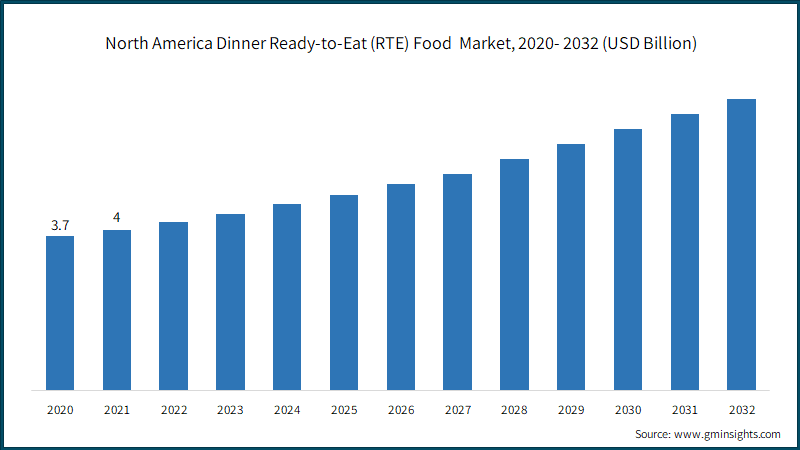Home > Food & Beverages > Processed Food > Convenience Foods > Dinner Ready-to-Eat (RTE) Food Market
Dinner Ready-to-Eat (RTE) Food Market Analysis
- Report ID: GMI6295
- Published Date: Jul 2023
- Report Format: PDF
Dinner Ready-to-Eat (RTE) Food Market Analysis
The ready meals segment of dinner ready-to-eat food market is poised to witness high demand during 2023 to 2032, attributed to the flexibility of choosing from a range of frozen ready meals, chilled ready-to-eat meals, canned meals, and dehydrated or shelf-stable meals that align with their lifestyles, dietary choices, and time constraints. Frozen ready meals offer longer shelf life and convenience, while chilled meals focus on freshness and minimal preservatives. Canned meals provide extended shelf life and portability, and dehydrated or shelf-stable meals are ideal for outdoor activities and emergencies.

The dinner RTE food market share from hypermarket/supermarket segment was 37% in 2022, as these stores play a pivotal role in the distribution and accessibility of the product. They offer a wide variety of RTE meal options, providing consumers with a one-stop shopping experience for their convenience food needs. With ample shelf space and efficient logistics, hypermarkets and supermarkets ensure a consistent supply of RTE products from various brands, catering to different tastes and dietary preferences. The extensive reach and popularity, supermarkets & hypermarkets meet the demands of consumers seeking quick & easy meal solutions during their regular grocery shopping, in turn adding to the market value.

North America dinner ready-to-eat food market was remunerated at USD 4 billion in 2022, driven by the fast-paced lifestyle of consumers and busy work culture in the region. With the growing number of single-person households and dual-income families, there is preference for quick & easy dinner solutions. With a strong presence RTE food industry players in the region, consumers have diverse options catering to various tastes and dietary preferences.
Moreover, the increasing focus on health & wellness is encouraging the development of healthier RTE choices, appealing to health-conscious consumers. With a robust distribution network through supermarkets, hypermarkets, and e-commerce platforms, North America will remain a lucrative avenue for market players.

